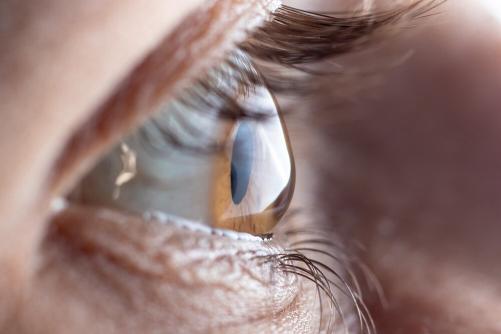A clinical trial in 60 keratoconus patients aged 10-16 years old, most of which were based at the NIHR Clinical Research Facility at Moorfields Eye Hospital, found that a treatment for keratoconus, known as corneal cross linking, was effective at stopping its progression in young patients.
We shall be hosting a presentation of the results of this trial on 9th October 2021, details to follow.
Keratoconus is an eye condition where the normally round, dome-shaped, clear front window of the eye (cornea) progressively thins, causing a bulge to develop. This eventually impairs the ability of the eye to focus properly, potentially causing progressively worsening vision.
It is known that corneal cross-linking treatment can halt keratoconus progression and stabilise vision in adults, but until now we didn’t know the effectiveness of this treatment in young patients. This is particularly important as keratoconus is known to progress faster when the onset is in childhood and early teen years. The results of this study show that treating these younger keratoconus patients with corneal crosslinking is effective in arresting the progression of their disease. The clinical trial results represent evidence previously unavailable which strengthens the cases for making cross-linking available throughout the UK, which at present it is not.
A patient, Anne Klepacz who was the lay representative on the study, through her role as trustee of the Keratoconus Group charity said: “It is very exciting to have the results of this study, giving hard evidence of the effectiveness of corneal crosslinking in young people, and providing reassurance and clarity for both parents and young people with keratoconus. We hope the findings will result in crosslinking becoming widely available throughout the UK.”
Frank Larkin, consultant ophthalmologist at Moorfields Eye Hospital, said: “Our findings suggest that corneal crosslinking should be considered as the first line treatment in progressive keratoconus in young patients. It will be interesting to see the longer term impact of this treatment for these patients and if it means the patients won’t need to wear contact lenses or have a corneal transplantation in later life.”
This post was copied from the Moorfields website
To read the technical details of the Keralink trial click – here

